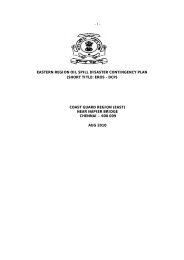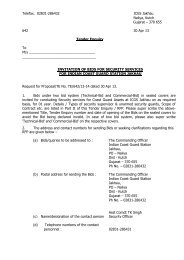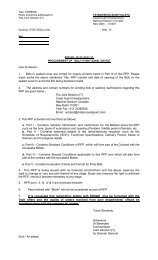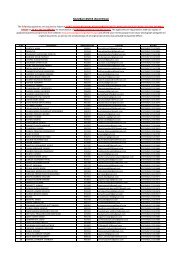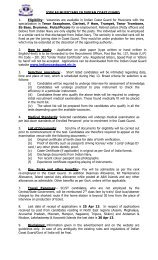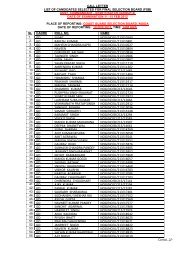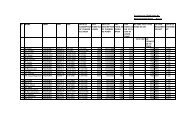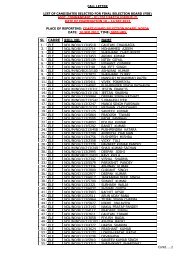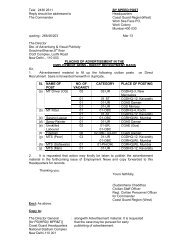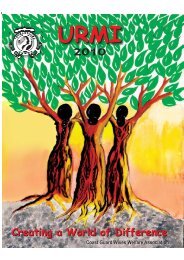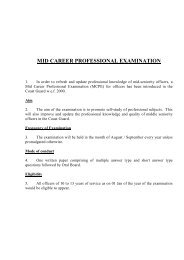Jan 2009 edition - Indian Coast Guard
Jan 2009 edition - Indian Coast Guard
Jan 2009 edition - Indian Coast Guard
Create successful ePaper yourself
Turn your PDF publications into a flip-book with our unique Google optimized e-Paper software.
<strong>Jan</strong> <strong>2009</strong> Vol X Issue 1<br />
Shoreline Protection and <strong>Coast</strong>al Erosion<br />
Hazard Data<br />
The intent of shoreline setbacks is to establish a<br />
coastal-hazard buffer zone to protect beach-front<br />
development from high-wave events and coastal erosion.<br />
Adequate setbacks allow the natural erosion and accretion<br />
cycles to occur and help maintain lateral beach access.<br />
Furthermore, setbacks provide open space for the<br />
enjoyment of the natural shoreline environment.<br />
are in a state of dynamic equilibrium, where the net influx<br />
of sediment or sources, equals the net loss of sediment or<br />
sinks. Sources of beach sediment include skeletal material<br />
from coral reef ecosystems, onshore transport of sand,<br />
long shore transport, headland erosion, volcanic glass, river<br />
input, and erosion (scarping) of the coastal upland.<br />
Sediment sinks include loss to deep water, harbors, and<br />
channels, offshore transport, long shore transport,<br />
impoundment by engineering structures, and storm surge<br />
over wash. When there is an imbalance between sources<br />
and sinks, the beach will either erode or accrete.<br />
<strong>Coast</strong>al processes such as erosion and accretion<br />
are site-specific, season specific, and inter annual. Different<br />
beaches have different geomorphic characteristics and are<br />
subject to different oceanographic conditions. Beach<br />
processes can vary dramatically from one end of a<br />
particular beach to the other. Site-specific factors such as<br />
extent and health of coral reefs, alterations to dune<br />
systems, sediment runoff from upland areas, and other<br />
human activities also affect coastal processes. Wave and<br />
current patterns change dramatically from season to<br />
season, and from swell to swell. Because of these<br />
variations, each segment of each beach will have its own<br />
history of erosion and accretion trends.<br />
An analysis of coastal erosion trends would provide<br />
data on a property scale to enhance decision making in<br />
the coastal zone area. <strong>Coast</strong>al and marine environments<br />
are greatly influenced by the activities of humankind.<br />
Increasing public awareness of the sensitivity of these<br />
environments would sharply decrease human impacts.<br />
Policy makers and agency personnel should be provided<br />
with guidance for more effective beach management<br />
practices. Equally important is increasing awareness and<br />
education of general public. Involvement of both the<br />
private and public sector will further strengthen the<br />
whole system.<br />
Policy makers and agency personnel need to be better<br />
informed so that their decisions are environmentally and<br />
economically responsible. The same applies to developers<br />
and contractors, especially those working at shoreline<br />
properties. A better informed public will support decisions<br />
that need to be made.<br />
Further more a beach management or a shoreline<br />
protection plan can be put into force which will not<br />
only study the present threat and its remedies but also<br />
the future consequences and its effect in the area.<br />
The recommendations can be used as a guide line for<br />
better law formulation, its implementation, and its<br />
execution.<br />
14



